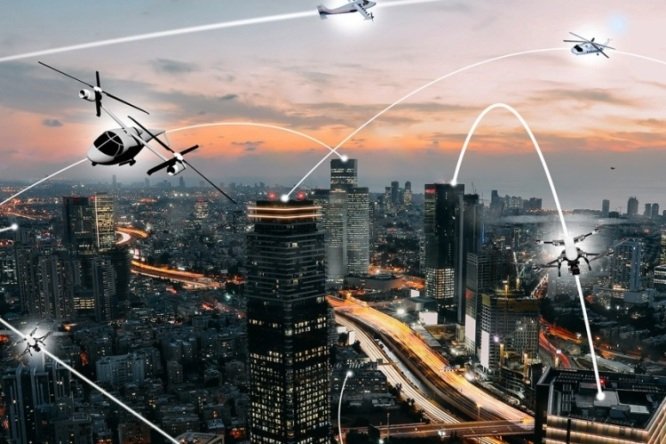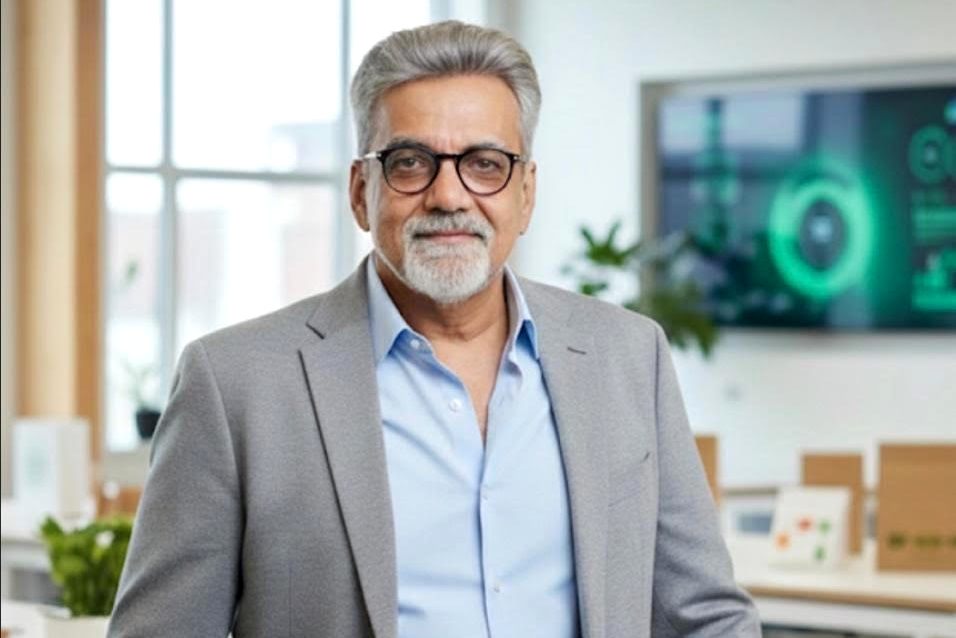Urban Air Mobility (UAM) is no longer a far-fetched dream from science fiction; it’s rapidly becoming a transformative reality. With advancements in electric vertical take-off and landing (eVTOL) aircraft and drone technology, the promise of a cleaner, congestion-free urban environment is closer than ever. Cities worldwide are grappling with traffic congestion, which costs the global economy $1.4 trillion annually in wasted time and fuel, according to INRIX's 2023 Global Traffic Scorecard. Urban Air Mobility offers a solution by taking transportation to the skies, reducing surface traffic while offering an environmentally friendly alternative to conventional modes of travel.
In fact, a study by Morgan Stanley predicts that the global UAM market could reach a staggering $1 trillion by 2040. This growth is being driven by technological advancements, growing investments in electric aviation, and increasing public and government interest in sustainable mobility solutions. India, too, is embracing this revolution. With cities like Bengaluru, Mumbai, and Hyderabad struggling with some of the worst traffic congestion in the world, the UAM sector is poised to take off.
Moreover, UAM aligns perfectly with the global push for sustainability. With eVTOL aircraft and drones powered by electricity, these vehicles could significantly reduce greenhouse gas emissions, particularly in urban areas where transportation accounts for approximately 20% of global CO2 emissions. The integration of UAM with existing urban infrastructure and policies is now a critical focus area for governments, private players, and innovators alike.
The Rise of eVTOL Aircraft and Their Potential
Electric vertical take-off and landing (eVTOL) aircraft represent the centerpiece of UAM. Designed to operate in congested urban areas, eVTOLs are powered by electric propulsion systems that make them environmentally friendly and quieter than conventional helicopters. These vehicles are envisioned to carry passengers for short urban commutes, reducing the dependency on road-based transportation.
According to a report by Allied Market Research, the global UAM market size was valued at $2.6 billion in 2022 and is expected to reach $30.7 billion by 2032, growing at a compound annual growth rate (CAGR) of 28.5%. The rapid technological advancements in battery technology, autonomous flight systems, and infrastructure development are driving this exponential growth.
Some key benefits of eVTOLs include:
- Reduction in Urban Congestion: By utilizing the airspace, eVTOLs can ease the load on roads.
- Lower Emissions: With electric propulsion, these vehicles contribute to decarbonizing urban transport.
- Cost-Efficiency: Reduced operational costs in the long run, especially for autonomous models.
The Role of Drones in Urban Air Mobility
Drones have already proven their utility across various applications, from logistics to healthcare. In the UAM ecosystem, drones are playing a transformative role in reshaping urban cargo delivery, medical emergency responses, and even last-mile passenger transport. Key applications include:
- Cargo Delivery: Companies like Amazon and Flipkart are experimenting with drone delivery to reduce last-mile delivery times and costs. For instance, a drone can deliver packages in urban areas within minutes, avoiding traffic delays and cutting fuel consumption.
- Medical Emergencies: Drones are being deployed to deliver critical medical supplies such as vaccines, blood, and organs to hospitals. They have proven life-saving in remote and congested areas.
- Passenger Transport: Larger drones are being designed to carry passengers for short distances, providing a futuristic solution to urban commuting challenges.
Recent studies estimate that drones can reduce urban logistics emissions by up to 30% while delivering packages up to three times faster than traditional methods.
Recent Trends in Urban Air Mobility
- Global Adoption of eVTOL Technology: Leading players like Joby Aviation, Lilium, and Volocopter are piloting eVTOL aircraft for urban transport. Joby Aviation recently secured FAA certification to begin commercial passenger operations in the United States.
- Integration with Smart Cities: Urban air mobility solutions are being integrated into smart city frameworks. Singapore and Dubai, for instance, are developing "vertiports" — specialized hubs for eVTOL operations.
- Battery Advancements: Innovations in solid-state batteries are extending the range and efficiency of eVTOL aircraft, making them more viable for widespread adoption.
- Policy and Regulation: Governments worldwide are drafting policies to regulate urban air mobility. The European Union Aviation Safety Agency (EASA) and the Federal Aviation Administration (FAA) are working on safety certifications for UAM vehicles.
Indian Companies Driving Urban Air Mobility
India is also stepping up in the UAM race, with several companies investing in this cutting-edge technology. Here are the Indian organizations leading the charge:
- Hindustan Aeronautics Limited (HAL): Developing advanced aerospace technologies that could support eVTOL development.
- The ePlane Company: Based in Chennai, this startup is developing compact electric flying vehicles for intra-city travel.
- Skyroot Aerospace: Though primarily focused on space technologies, its innovations in lightweight materials are finding applications in UAM.
- Asteria Aerospace: Specializes in drone-based solutions for logistics, surveillance, and emergency response.
- IdeaForge: A leader in UAV manufacturing, contributing to the cargo and surveillance aspects of UAM.
- Bellatrix Aerospace: Known for propulsion technology, it is exploring applications for urban air vehicles.
- Garuda Aerospace: A leading drone startup providing solutions for agriculture, logistics, and medical deliveries.
- Thanos Technologies: Focused on building sustainable drone technologies for urban and industrial use.
- Zuppa Aerospace: Developing AI-powered drones for smart logistics and urban air transport.
- DroneAcharya Aerial Innovations: Offering innovative drone solutions for smart cities and UAM infrastructure development.
Challenges Ahead
Despite the promise of UAM, several hurdles remain:
- Regulatory Uncertainty: Ambiguity in policies regarding airspace usage and safety standards.
- High Initial Costs: The cost of developing and deploying eVTOL and drone technologies remains prohibitive for widespread adoption.
- Public Acceptance: Building trust among the public regarding the safety and reliability of UAM vehicles.
- Infrastructure Gaps: The lack of vertiports and dedicated air corridors in urban areas.
Conclusion
Urban Air Mobility presents an exciting opportunity to transform how we think about urban transportation. By leveraging eVTOL aircraft and drones, cities can reduce congestion, lower emissions, and improve the efficiency of logistics and commuting. However, realizing this vision will require concerted efforts from governments, private companies, and communities to overcome challenges and build a sustainable ecosystem for UAM.
India, with its burgeoning urban population and tech-savvy entrepreneurs, is well-positioned to lead the charge. As the country continues to innovate and adapt its policies, the dream of flying cars and drones for a cleaner tomorrow could become a reality sooner than we think.










.jpg)




